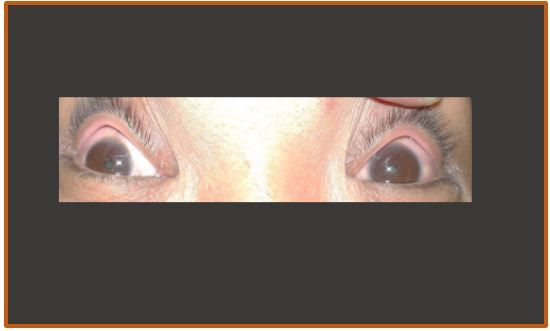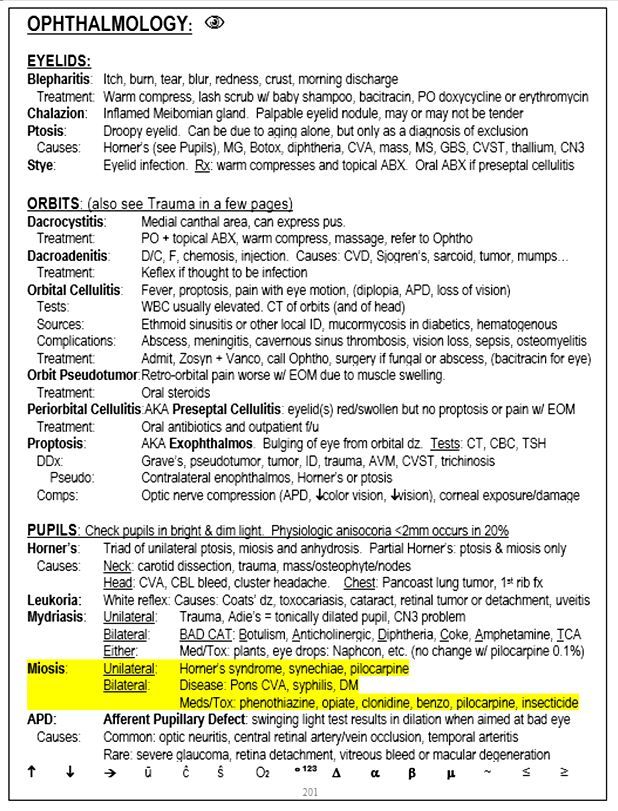A Case of Bilateral Miosis: Your Diagnosis?
Myosis is accompanied by acute onset dizziness, double vision, and asthenia. What's in your differential diagnosis?
Figure 1. Facial image.

Figure 2. Page shot

History: A 74-year-old female with a history of hypertension and GERD presents to the ED with dizziness that came on suddenly about 6 hours ago. She also describes imbalance, generalized weakness, and double vision. She has never had these symptoms before. She takes only metoprolol and ranitidine, neither of which is new. She denies use of any alcohol, pain medications, or sedatives.
Exam: Her vital signs are all within normal limits except for her blood pressure, which is 171/99 mmHg. The head and neck exam is notable for bilaterally small pupils, which are both ~1.5 mm in both dim and full light (non-reactive). She also has a mild disconjugate gaze, with the right eye deviated slightly to the right (see facial image in Figure 1, above right; please click to enlarge). Results of the chest and abdominal exam are both normal. The neurologic exam is notable for mild ataxia.
Questions:1. What is the differential diagnosis of bilateral miosis?
2. What is the most likely cause in this case?
Please click below for answers and discussion.
Answers
1. The differential diagnosis for bilateral miosis includes syphilis, diabetes, pontine stroke, and medication or insecticide toxicity.
2. Given the sudden onset, lack of new medications, and the patient’s risk factors, a pontine stroke should be at the top of the differential diagnoses considered. In this patient’s case, parapontine stroke was the diagnosis.
Discussion
Miosis, like many physical exam findings, can have many causes. When the onset is acute, stroke should always be one of the top considerations, especially when other neurologic symptoms or signs are present. The differential can be further narrowed based on whether miosis is unilateral or bilateral.
In unilateral miosis, one first has to confirm that the small pupil is indeed the abnormal one. If so, the differential diagnosis includes unilateral use of pilocarpine eye drops, unilateral iris pathology, and Horner’s syndrome, which has its own extensive list of causes (see page shot in Figure 2, above; please click to enlarge).
In bilateral miosis the differential diagnosis includes a number of medications-most notably opioids, phenothiazines, sedatives, and clonidine-as well as pontine stroke, neurosyphilis, and complications of diabetes.
The page shot also includes other conditions that can affect the pupils and/or eyelids. After MRI confirmed a stroke, this patient was admitted for further workup and was found to have intermittent atrial fibrillation.
For additional information on miosis, please click on the page shot in Figure 2 above to see an excerpt from the Ophthalmology section ofThe Emergency Medicine 1-Minute Consult Pocketbook.